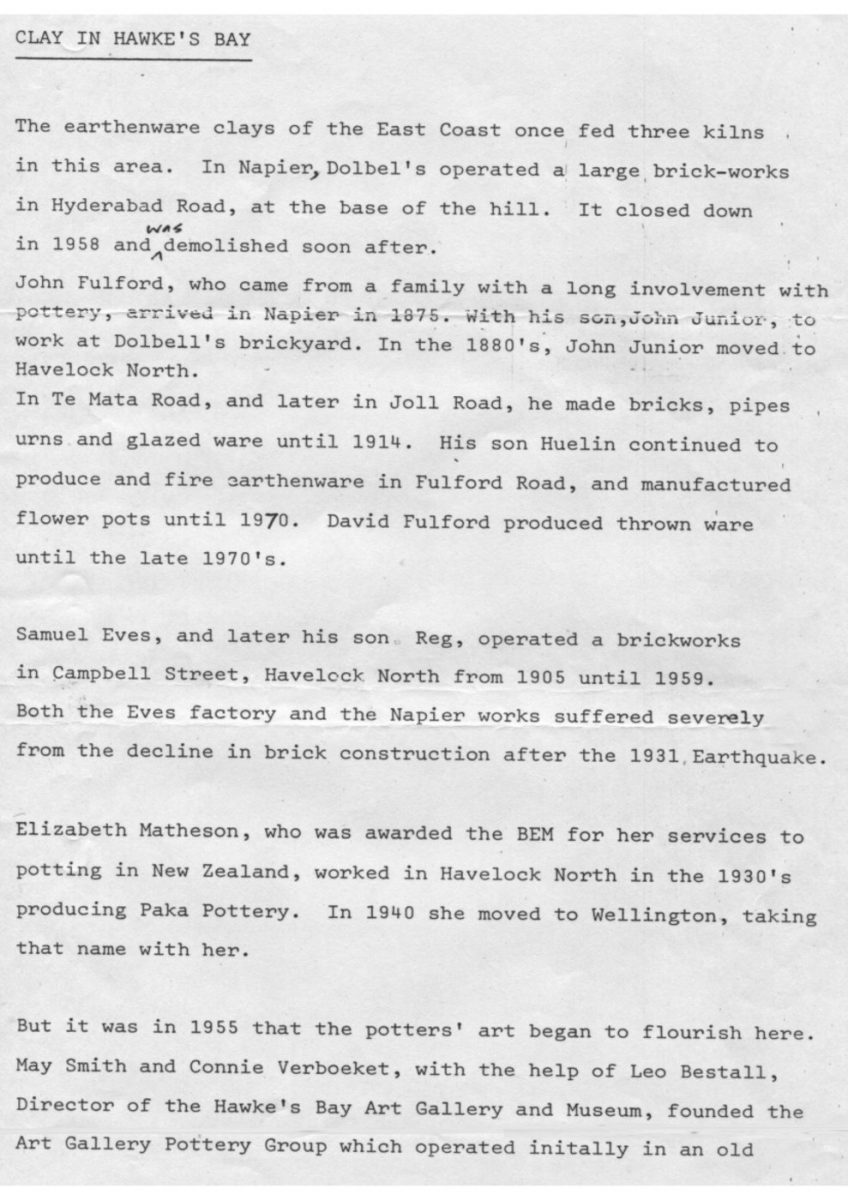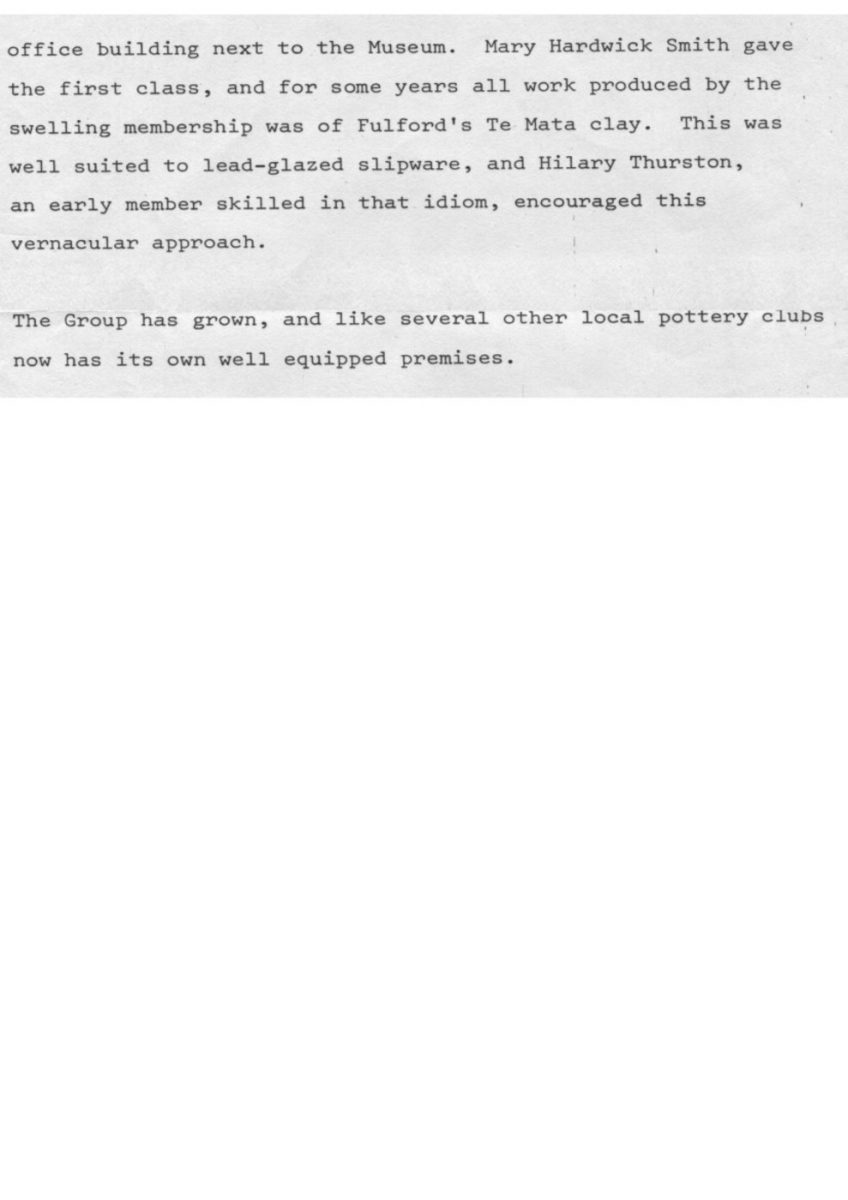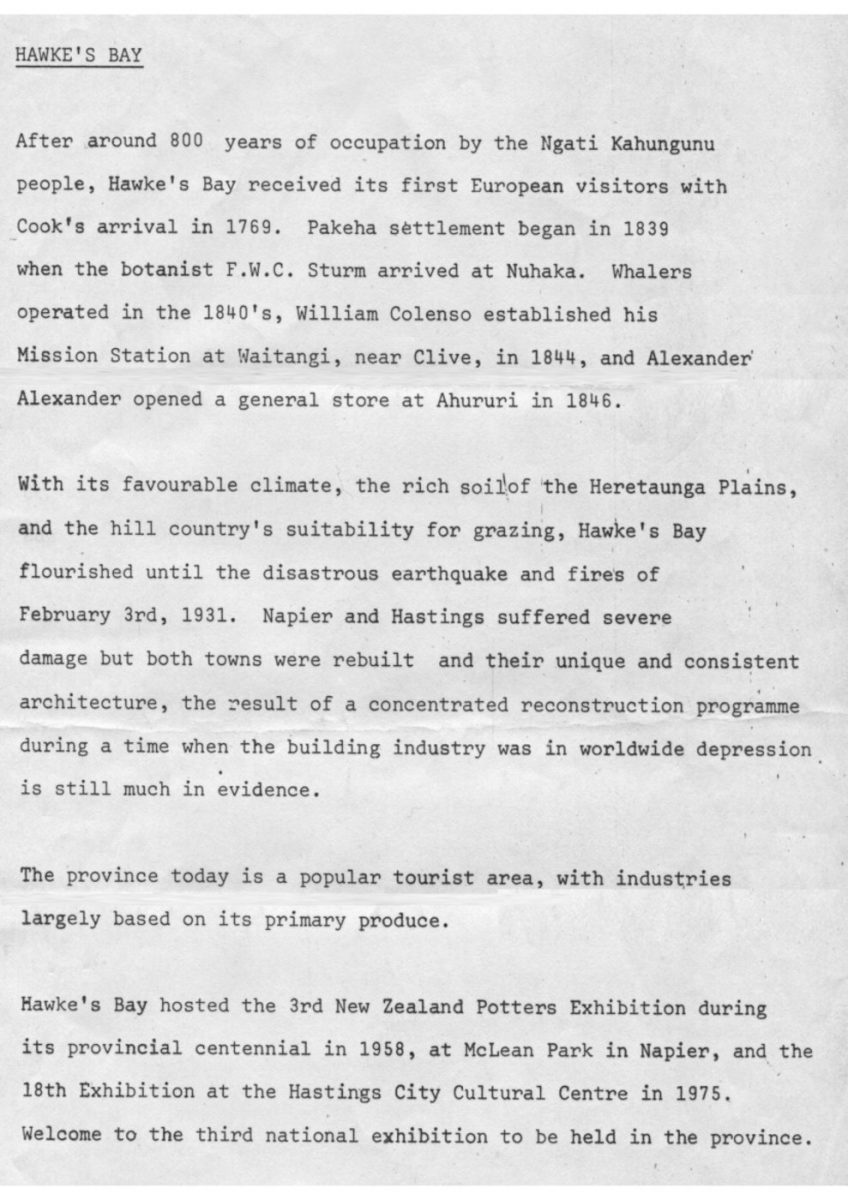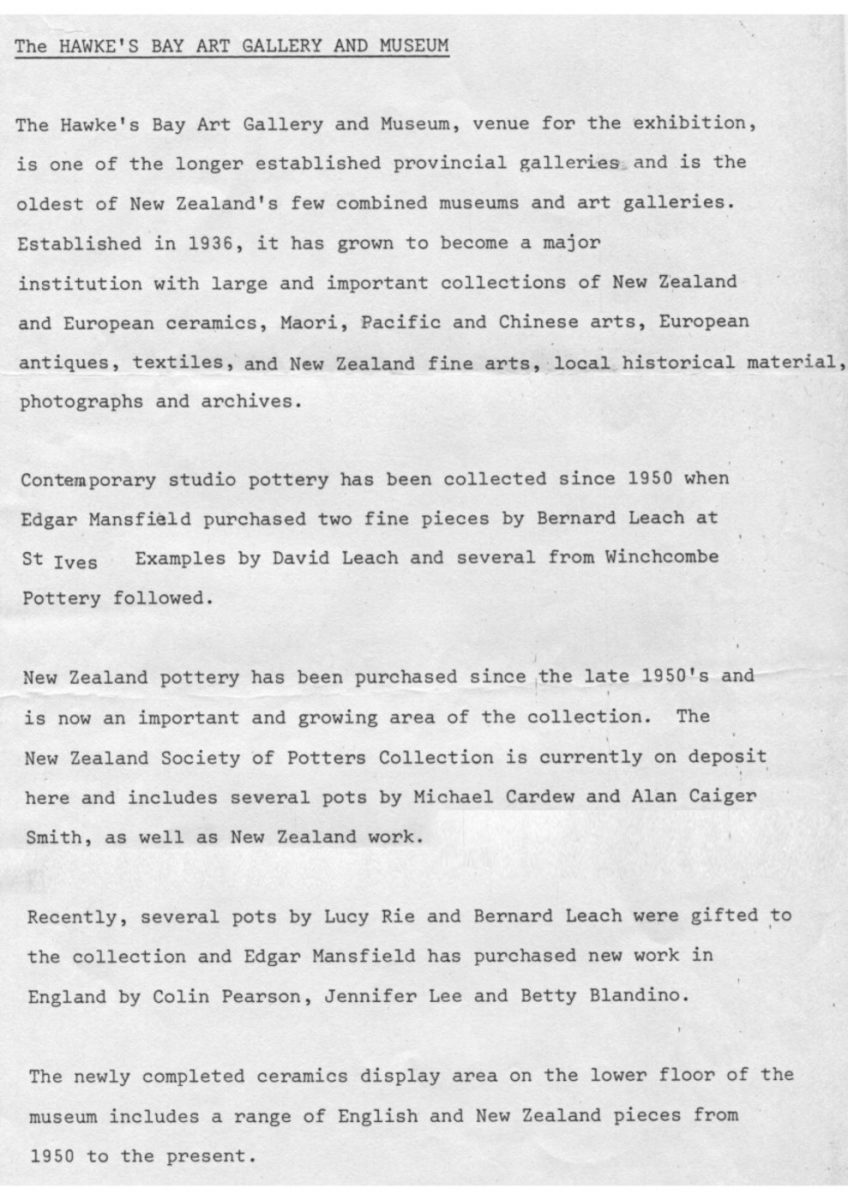Clay and Pottery in Hawke’s Bay
Original digital file
MartinBJ615_ClayInHB.pdf
Non-commercial use

This work is licensed under a Attribution-NonCommercial 3.0 New Zealand (CC BY-NC 3.0 NZ).
Commercial Use
Please contact us for information about using this material commercially.✖
Can you help?
The Hawke's Bay Knowledge Bank relies on donations to make this material available. Please consider making a donation towards preserving our local history.
Visit our donations page for more information.
Subjects
Tags
Format of the original
Typed documentPeople
- Alexander Alexander
- Leo Bestall
- Betty Blandino
- William Colenso
- Reg Eves
- Samuel Eves
- David Fulford
- Huelin Fulford
- John Fulford
- John Fulford Junior
- Michael Cardew
- Alan Caiger Smith
- Mary Hardwick Smith
- Bernard Leach
- David Leach
- Jennifer Lee
- Edgar Mansfield
- Elizabeth Matheson
- Colin Pearson
- Lucy Rie
- May Smith
- F W C Sturm
- Hilary Thurston
- Connie Verboekt














Do you know something about this record?
Please note we cannot verify the accuracy of any information posted by the community.